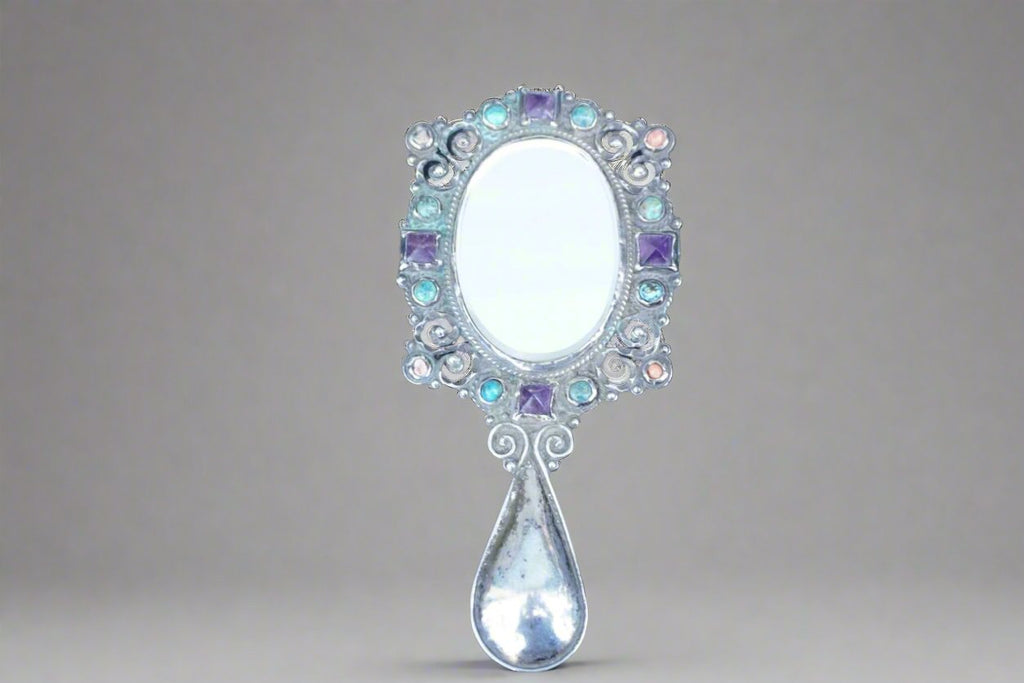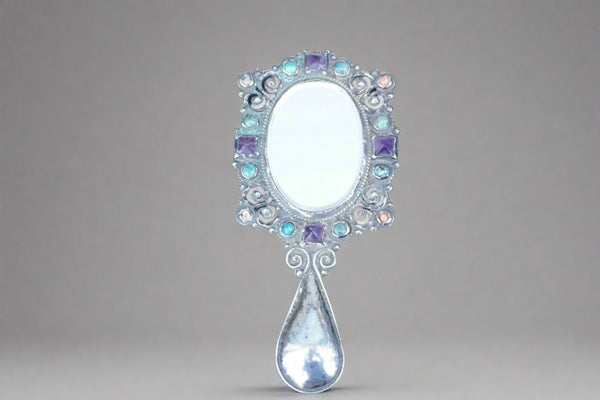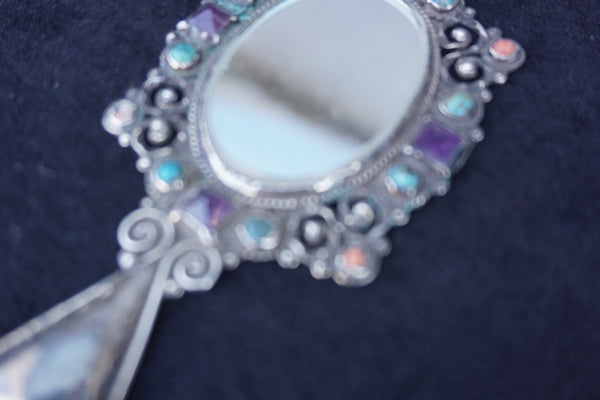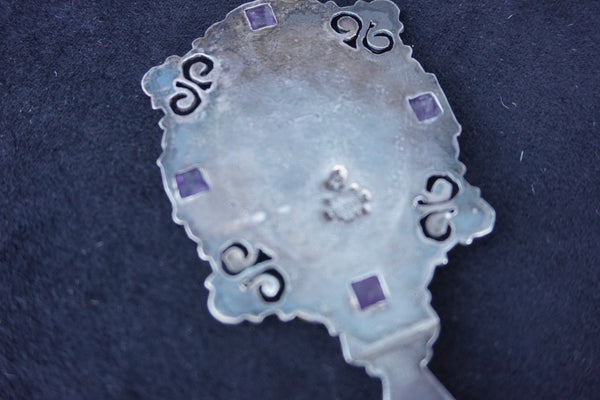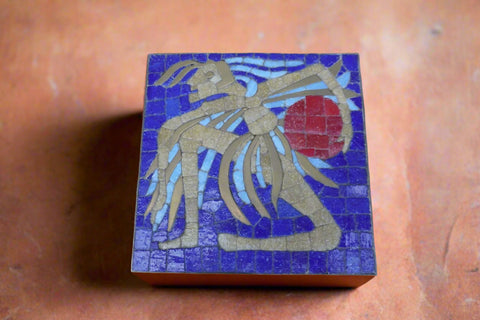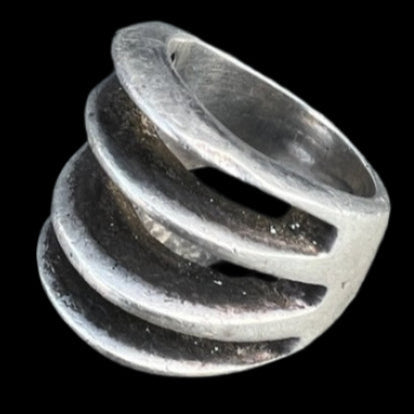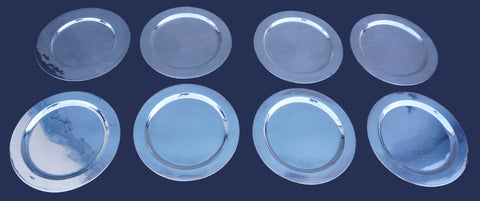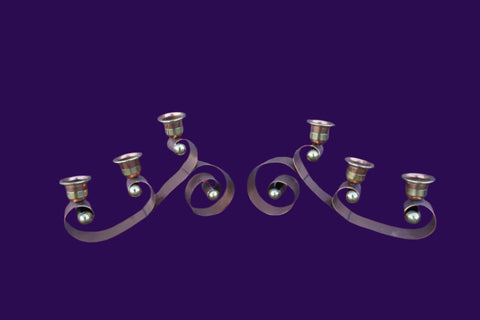Matilde Poulat Silver, Amethyst & Coral Hand Mirror J617
Measures 4 1/2" x 2 1/4". Exquisite.
Also known by her jewelry studio name MATL, Matilde Poulat was a Mexican silversmith and jewelry designer. Best known for her exquisite and intricate necklaces, Matilde was an exceptional craftsman, fashioning handset pieces that alternate between opulent and ebullient. Poulat’s career took off when she launched her studio in 1934. Only a decade later she would set the tone for the rest of the industry, inspiring silversmiths in Mexico, California, and beyond to copy her designs. These pieces have come to be synonymous with the name MATL, even when they aren’t made by Poulat, often being described as Matl-esque.
That said, there is only one Matilde Poulat and her pieces are ultimately un-copyable. Starting as a painter, Matilde brought much of her colorful aesthetic to the jewelry making business, coming up with designs that absolutely pop with fresh colors of the American Southwest and Mexico. Matl pieces were extremely popular during Poulat’s lifetime, and that demand has only increased as the years have gone by.
Her pieces were famed for their ornateness and their color. Best known for the work she did with her own studio, MATL, a Poulat necklace shows two things: perfect knowledge of silversmith craftsmanship and a whimsical, fun side to jewelry that to that point hadn’t been explored. That whimsy made MATL an extremely popular brand during her lifetime. It was impossible to get a Poulat piece for many years. Utilizing opal, amethysts, and one-of-a-kind pyramidal designs, Poulat was able to create pieces that had never been thought of, let alone created, before by a jewelry maker. Her practice was continued by her nephew, Ricardo Salas, upon her death in 1960.
Matilde Poulat was born in the Yucatan peninsula in 1900. In her early years, Poulat focused mainly on painting, her canvases featuring early aesthetics that she would explore later on in her jewelry-making career. She attended the San Carlos Academy of Fine Arts in Mexico City. Sometime after, in the 1920s, Poulat began to experiment and learn about silversmithing. She mixed aspects of her native Mixtex culture with modernist designs to create something new. By 1934, she was extremely in-demand -- many of her designs and pieces won international awards. Her pieces often utilize silver, turquoise, amethyst, and red coral.

